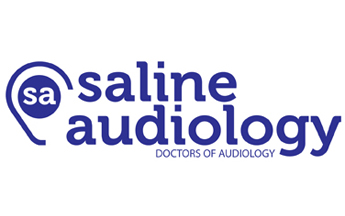At Saline Audiology, your audiological evaluation is not “just a hearing test.” The very basic definition of an audiologic evaluation is to determine your ability to hear sounds. The purpose of audiological assessment is to determine the degree of hearing loss, the type of hearing loss and the configuration of the hearing loss. The audiologic evaluation consists of several different components.
Case History
The audiologist will ask several questions during the case history. For example:
- Why are you here today?
- Have you noticed difficulty with your hearing? What have you noticed? For how long? When do you think the hearing loss began?
- Does your hearing problem affect both ears or just one ear?
- Has your difficulty with hearing been gradual or sudden?
- Do you have ringing (tinnitus) in your ears?
- Do you have a history of ear infection?
- Have you noticed any pain in your ears or any discharge from your ears?
- Do you experience dizziness?
- Is there a family history of hearing loss?
- Do you have greater difficulty hearing women’s, men’s, or children’s voices?
- Do people comment on the volume setting of your television?
- Has someone said that you speak too loudly in conversation?
- Do you frequently have to ask people to repeat?
- Do you hear people speaking, but can’t understand what is being said?
- Do you have any history of exposure to noise in recreational activities, at work, or in the military?
- Are there situations where it is particularly difficult for you to follow conversation? Noisy restaurant? Theater? Car? Large groups?
For children, questions will also be asked regarding:
- speech and language development
- health history
- recognition of and response to familiar sounds
- the startle response to loud, unexpected sounds
- the presence of other disabilities
- any previous hearing screening or testing results
Otoscopy
This is simply looking in each ear to make sure the eardrum is well visualized. Earwax may be present and will be removed prior to any testing. Outer ear infection and draining ears may be present as well. A hole or a tube in the eardrum can be readily seen.
Impedance Testing
Air pressure is introduced into the ear canal to assess eardrum movement. The eardrum will not move well if there is middle ear fluid. High volume readings indicate a hole in the eardrum or an open tube that has been placed in the eardrum. Loud sounds are presented to both ears to check for a reflex that is occurs when sounds are loud. Absence of these reflexes can indicate certain types of ear disorders.
Pure Tone Testing
The softest loudness levels (measured in decibels) for pure tones at frequencies between 250Hz-8000Hz (frequencies containing sounds of speech) are established. This is determined with earphones on or in the ears (air conduction) and with an oscillator behind the ear (bone conduction-measurement at nerve of hearing).
Pure tone testing helps differentiate among the three types of hearing loss:
- Sensorineural Hearing Loss – Hear at the same levels with earphones as at nerve.
- Conductive Hearing Loss – Hearing loss caused by an impedance of sound prior to reaching the nerve of hearing. Middle ear fluid (ear infections), abnormal middle ear bone structure, middle ear bone diseases (otosclerosis), tumors of the middle ear, outer ears infection (swimmer’s ear), or earwax can all block sound causing some conductive hearing loss.
- Mixed loss – Combination of Sensorineural hearing loss and Conductive hearing loss.
Pure tone testing also shows the configuration and degree of the hearing loss:
- High frequency loss – very common: aging and noise exposure main causes. Often accompanied by a ringing or cricket sound in the ears. Almost always Sensorineural in nature.
- Low frequency loss – less common: seen in certain inner ear disorders such as Meniere’s Disease as a nerve type loss and sometimes accompanied by roaring or rushing sound in ears and a stopped up sensation. Common configuration in middle ear infection with conductive loss.
- Mid frequency loss -“cookie bite” loss – suggestive of congenital loss (from birth)
- Flat loss – basically equal loss across all frequencies-not related to any particular disorders of the ear unless conductive which is common with ear infections.
Hearing loss is classified as mild, moderate, severe, and/or profound. An individual may have various degrees of hearing loss across the tested frequency range.
Speech Testing
- Speech reception threshold: The softest loudness level (in decibels) that certain two syllable words can be repeated.
- Speech discrimination scores: Percentage of accuracy at repeating a standardized list of single syllable words. Generally, greater degrees of nerve type hearing loss are associated with lower word understanding scores. Poor word understanding may limit the benefits of amplification.
_______________________
Hearing healthcare is important at any age. Schedule your appointment with Saline Audiology today.
